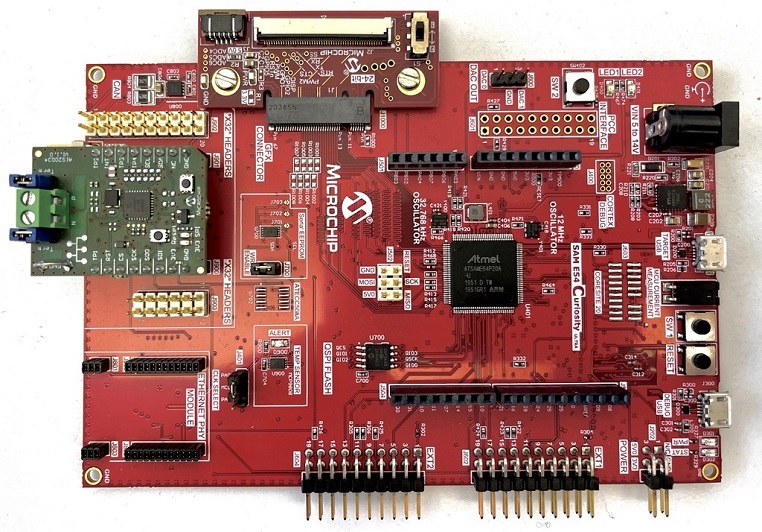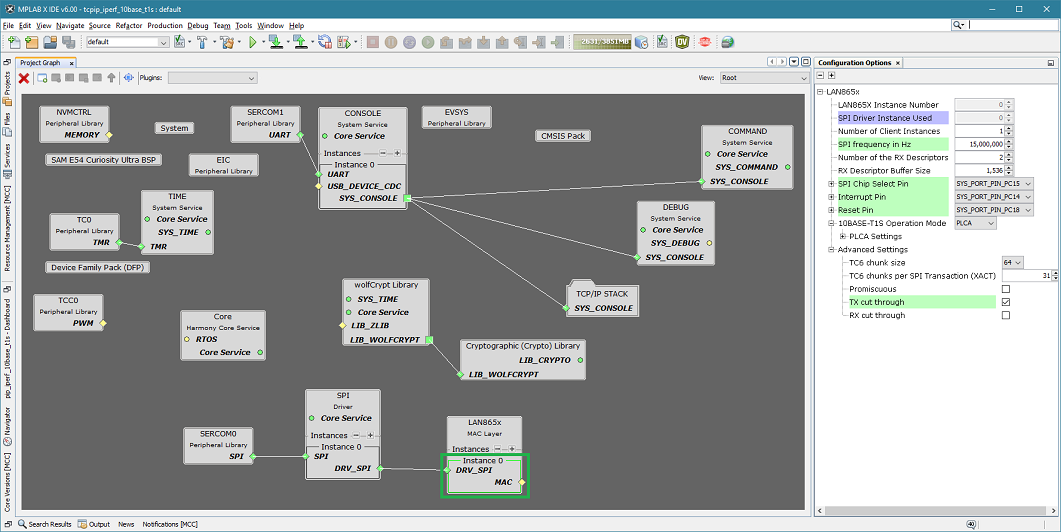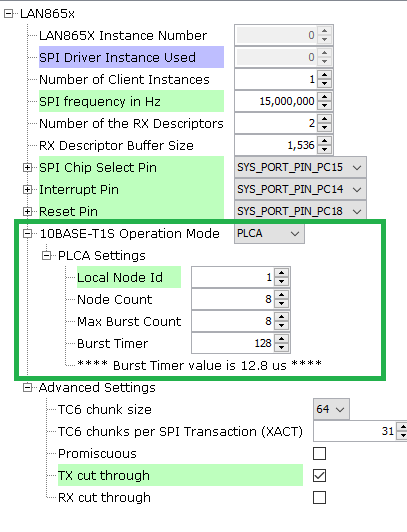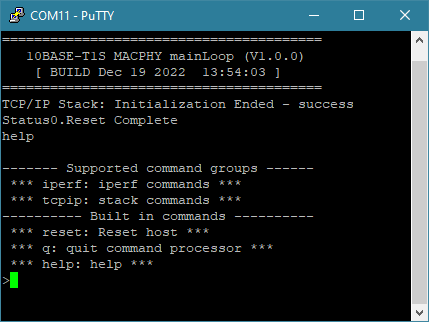3 TCP/IP Client using the LAN865x 10BASE-T1S Ethernet MAC-PHY
This example shows how to configure the LAN865x to be used in a 10BASE-T1S Multi-Drop Ethernet network in either PLCA and CSMA/CD mode. It also shows how to r/w registers of the LAN865x during normal operation. Additionally, common Ethernet network functionalities are supported, e.g. ping and iperf.
Building The Application
The parent folder for all the MPLAB X IDE projects for this application is given below:
Application Path : net_10base_t1s\apps\tcpip_iperf_lan865x\firmware
To build the application, refer to the table below and open the appropriate project file in MPLABX IDE.
| Project Name | Description |
|---|---|
| tcpip_iperf_lan865x.X | TCP/IP Client using the LAN865x 10BASE-T1S Ethernet MAC-PHY |
| tcpip_iperf_lan865x_freertos.X | TCP/IP Client using the LAN865x 10BASE-T1S Ethernet MAC-PHY in FreeRTOS environment |
Hardware setup

- Hardware used
- Hardware setup
- Connect the DEBUG USB port on the board to the computer using a micro USB cable
- Connect the SPI to 10BASE-T1S interface card to another 10BASE-T1S node (e.g. a second instance of this setup)
Harmony 3 Settings for LAN865x
How to start from an empty project can be viewed
Configuration is done via the "MPLAB(c) Code Configurator". Start the corresponding tool via the menu "Tools" and "Embedded".
MAC-PHY Settings The LAN865x MAC-PHY settings are available by clicking the corresponding building block in the "Root"-view.

PLCA Settings
10BASE-T1S can be used in PLCA or CSMA/CD mode. When using PLCA, the parameters for Local Node ID, Node Count, Max Burst Count and Burst Timer must be configured. These settings are stored in a subsection inside the MAC-PHY settings.

Running the Application
- Open a Terminal application (e.g. Tera term) on the computer
- Connect to the Virtual COM port and configure the serial settings as follows:
- Baud : 115200
- Data : 8 Bits
- Parity : None
- Stop : 1 Bit
- Flow Control : None
- Build and Program the application using the MPLAB X IDE For optimum results, select "Release" Mode as build target, this requires fee-based XC32 compiler license.
- See the messages in the console
- Type 'help' for getting a list of available commands

